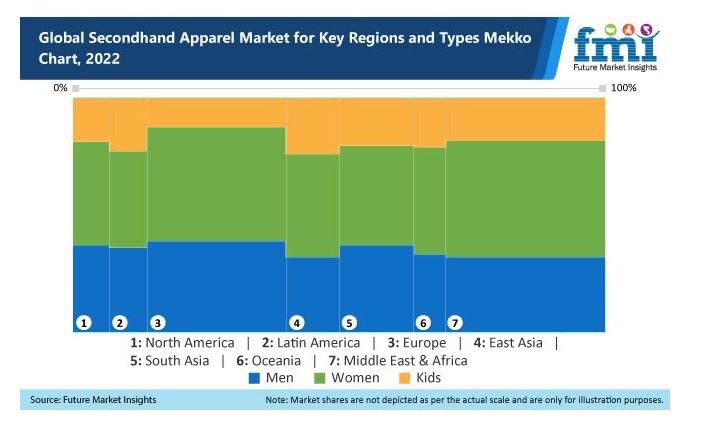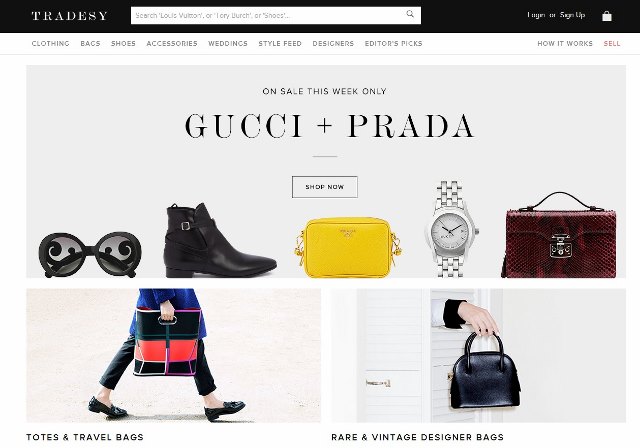
Thrifting Stores
Thrifting Stores – Big Trend That Will grow 127% by 2026. The market for secondhand clothes is expected to experience three times greater growth rate than the clothing market in general.
Thrifting Stores – Second Hand Clothing Market
Future Market Insights has provided insight into the global market for secondhand clothing, indicating that demand is projected to increase at a CAGR of 14.8% between 2022 and 2032. This growth rate is significantly higher than the 7.1% CAGR seen between 2017 and 2021. The rising popularity of eco-fashion, increased use of online shopping platforms, and the cost-effectiveness of used clothing are some of the primary drivers of this growth.
The fashion industry is a significant contributor to global carbon emissions, accounting for more than 10%. As a result, both consumers and businesses are increasingly aware of the importance of sustainable fashion and expect transparency in operations. The sustainable fashion movement has helped to reduce pollution, climate change, and unethical labor practices.
Secondhand clothing is a form of clothing recycling that saves a substantial amount of unwanted clothing from ending up in landfills. The materials used in refurbishing the clothing include regenerated cashmere, ethically sourced wool, and organic cotton. The production process for these clothes uses solar equipment energy, and recyclable materials are used for packaging.
Other well-known brands are combining high-quality natural and recycled materials to produce a diverse range of sustainable adventure and outdoor wear, such as pants and t-shirts made from recycled polyester, and fair trade sweaters made from recycled cotton, polyester, and cashmere.

Thrifting Store in US
The annual revenues of the U.S. resale industry, which includes antique stores, are estimated to be around $17.5 billion. However, this figure is subject to significant variation due to the many thousands of single location shops, multi-location chains, franchises, and non-profit stores that make up the industry. The discrepancy in reported revenues highlights the potential for growth in the industry, which is already expanding thanks to increased consumer spending and growing interest in resale shopping.
The Thrift Stores industry, in particular, has experienced a rise in revenue, indicating that consumers are becoming more attracted to thrift shopping. This trend suggests that there is a growing demand for thrift store products, which could result in increased revenue for the industry.
Over the past two years, the number of resale shops has grown by 7%, with over 25,000 stores currently operating in the US. Approximately 16-18% of Americans shop at thrift stores, and 12-15% shop at consignment or resale shops annually.
Thrifting stores in EU and UK
The thrift store industry in the US has a vast network of more than 25,000 consignment, resale, and non-profit shops, which indicates that these stores offer high-quality goods at significantly lower prices than the manufacturer’s suggested retail price. The popularity of thrift stores has grown significantly, both online and in-person, allowing consumers to save money, reuse clothes, and contribute to environmental sustainability. As this trend continues, there will be more opportunities for businesses to benefit from it, as well as more options for consumers to save money while promoting environmental sustainability.
In the European Union, the second-hand fashion resale market is expected to double in the next five years and be twice as large as the fast fashion market by 2030. This projected growth suggests that the resale market is rapidly expanding and may surpass the fast fashion market in the coming years. This growth is driven by factors such as the rising cost of living and environmental concerns, which have resulted in increased demand for thrift store products.
The UK Second-Hand Goods Stores industry has a market size of £2.4 billion in 2023, although it has declined faster than the Wholesale and Retail Trade sector overall. However, globally, the fashion resale market is predicted to grow 127% by 2026, which is three times faster than the wider retail clothing industry. This indicates that the thrift store industry is experiencing rapid growth, which may result in more customers and higher profits for thrift stores.
More insights in Thrifting Stores
Thrift stores are becoming increasingly popular, with a revenue of $10.5 billion in 2020 and a projected 1.1% growth between 2020 and 2025. There are over 25,200 thrift stores in the US, and 18-24-year-olds make up 40% of frequent shoppers. Thrift stores help reduce textile waste and the resale market generated $28 billion in 2020. The industry employs over 55,000 people and is expected to grow 11% annually between 2019 and 2023. Consumers prefer environmentally friendly brands, and 51% of US consumers expect to buy secondhand in the next five years. Baby boomers are responsible for 50% of all money spent at thrift and resale stores.

Thrifting is more than Clothes. Here are some other trends
Thrifting is not just limited to clothes as there are other trends to explore. According to Virginia Chamlee, author of Big Thrift Energy, lacquer is currently popular, especially in high-gloss walls and furniture. Vintage laminate furniture from the 80s and 90s can be revamped with lacquer and are easily found in thrift shops and on Facebook Marketplace. Additionally, Imani Keal suggests that rugs, lamps, and larger furniture like dressers will be popular in 2023, particularly dark wood furniture. Brown furniture, such as wood armoires, buffets, and dining tables, is also predicted to be in high demand by Jess Ziomek.
Wooden chairs, rush chairs, and handcrafted wooden seating made of dark woods are expected to be hot finds in 2023, according to Chamlee. Mirrors arranged in a gallery wall format will also be a trend to watch, according to Sarah Teresinksi. Lily Barfield predicts that 2023 will be the year of the dinner party, leading to an increase in the demand for beautiful china sets and serving pieces. Unique lighting choices and DIY lamps made from vintage jars and vessels are also expected to be popular. Finally, richly colored accessories like coffee table books, small ceramics, and vintage textiles in chocolate brown, burgundy, and ochre are becoming more popular, signaling a move away from the beige palette of previous years.
Source: The Spruce
The resale market is expanding beyond just clothing, with more items being purchased and resold in categories such as electronics, furniture, home goods, home improvement, sporting goods, outdoor equipment, and auto parts. Rebelstork, a Toronto-based company, introduced its baby gear resale platform to the US market in 2022. In the same year, Dick’s Sporting Goods launched Out&Back, a resale platform for gear like tents and snowboards, in addition to clothing. Furthermore, some major players in the resale market were acquired, such as Grailed by Goat Group, which primarily sells sneakers, and Poshmark by South Korean company Naver Corp. Additionally, Tradesy was acquired by Paris-based Vestiaire Collective, resulting in the closure of Tradesy and transfer of its 7 million members to the Vestiaire platform.
Key players in the Second Hand Apparel Trade
- Tradesy
- Thredup Inc.
- The realreal
- Poshmark
- Vinted
- Micolet
- Percentil.ma
- Thrift+
- Chikatex
- HunTex Recycling Kft
- EBay Inc.
- British Used Clothing Company
- A&E Used Clothing Wholesale
- Mobacotex
- StockX
The miracle boom of global second hand apparel market
iphone by Apple the Best among smartphones on Swiss eCommerce





